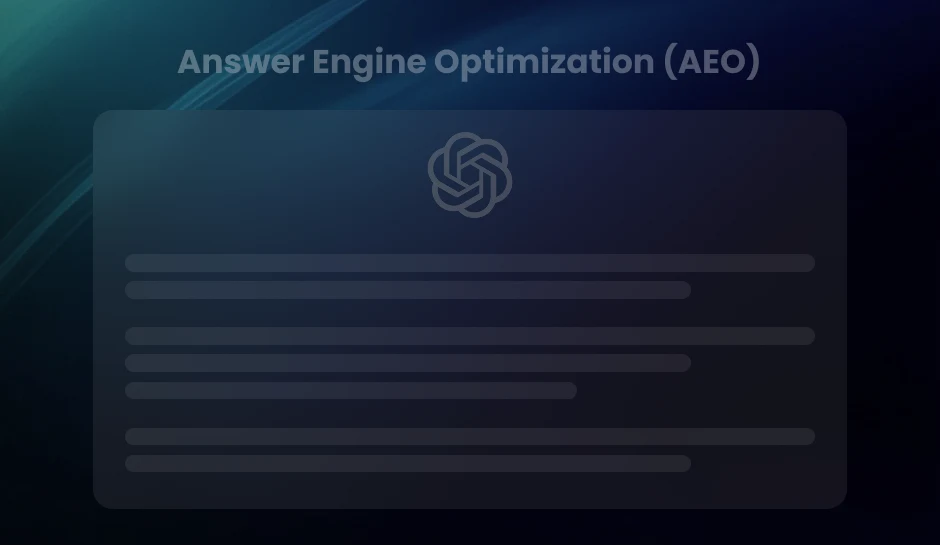
Google Analytics 4 Sessions: Track User Interactions Effectively
Session tracking is a crucial aspect of web analytics, helping you understand user behavior and engagement on your site. With the introduction of Google Analytics 4 (GA4), how sessions are tracked has evolved significantly from the traditional Universal Analytics model. This shift impacts how data is collected, reported, and analyzed, making it essential for marketers and analysts to grasp these changes. In this article, we’ll explore the key differences in session tracking between GA4 and Universal Analytics, offering insights into what these changes mean for your analytics strategy. Read on.
Do you need help tracking and interpreting user behavior on your website accurately? Many companies have found that migrating to Google Analytics 4 (GA4) raises more questions than answers, especially regarding understanding sessions. Unlike Universal Analytics, GA4 introduces a new way of measuring sessions, leading to confusion and potential data discrepancies.
These challenges leave you wondering if your session data is reliable enough to make critical business decisions. Misinterpretations can result in misguided strategies, missed opportunities, and a disconnect between your data and your business goals. The good news? By gaining a clear grasp of how sessions are tracked in GA4, you can resolve these issues and unlock the true potential of your analytics.
What’s User Engagement in Google Analytics 4?
User engagement in Google Analytics 4 (GA4) measures how actively users interact with your website or app. GA4 session metrics analysis provides deeper insights into user behavior by tracking key engagement indicators such as session duration, events triggered, and interactions per session. Unlike Universal Analytics, which relied on bounce rates, GA4 defines an engaged session as one that meets at least one of the following criteria:
- Lasts 10 seconds or more
- Includes at least one conversion event
- Contains two or more interactions, such as page views or clicks
GA4 prioritizes interaction quality over session length, providing a more accurate representation of user interest and activity. Google Analytics 4 sessions are designed to capture meaningful interactions, ensuring businesses gain deeper insights into user behavior. Engagement metrics like Engagement Rate, Engaged Sessions per User, and Engagement Time help businesses assess content effectiveness and optimize user experience.
Decoding Google Analytics: A Navigational Guide
Google Analytics is a digital compass for navigating the vast sea of user interaction data associated with websites and apps. By tracking and analyzing site performance accurately, marketing professionals and business owners can make informed decisions to improve online experiences and drive conversions.
The Progressive Leap to Google Analytics 4 (GA4)
GA4 emerges as the next evolutionary milestone in Google’s suite of analytical tools, designed with the future in mind. As digital landscapes become increasingly intricate, GA4 offers a more nuanced and granular understanding of user behavior across multiple platforms and devices.
- Anchored in machine learning, GA4 provides actionable insights that surpass the capabilities of its predecessors.
- The platform prioritizes user privacy without compromising the quality of insights, a balance that responds to market demands and regulatory changes.
- Marketers gain access to robust features that enable them to track user interactions with clarity, facilitating the crafting of personalized user experiences.
Reinventing the analytics game, GA4 sets a new standard by transitioning from session-based to event-based data models, fostering a more comprehensive understanding of user journeys.
The Evolution of Analytics: Embracing Google Analytics 4
Google’s introduction of Google Analytics 4 (GA4) marks a pivotal shift in digital analytics. This transition signals a departure from the long-standing Universal Analytics (UA) framework and a shift towards a platform designed to cope with the new era’s data demands. With this change, website owners and data analysts are witnessing a transformation that reshapes how web interactions are tracked, interpreted, and reported. Google Analytics 4 sessions play a crucial role in this new framework, offering a more comprehensive view of user engagement and behavior across multiple touchpoints.
GA4 Sessions: A New Paradigm in Data Analysis
Sessions within GA4 embody a redefined approach to measuring user interactions. Unlike its predecessor, GA4 does not rely solely on pageview-based metrics. Instead, it offers a more nuanced understanding by capturing many user interactions as events, providing a more granular view of user behavior. As a result, analysts gain access to a richer dataset, which empowers them to extract meaningful insights and drive data-driven decisions.
Transitioning to GA4 brings a fresh perspective to the analytics landscape. Users experience a metric evolution where sessions are no longer just about the duration spent on a site but the quality and context of user engagement. This approach is a direct response to a digital environment that has become increasingly complex, necessitating tools that accurately reflect user interactions’ multifaceted nature.
The shift from Universal Analytics to Google Analytics 4 was a simple update and a complete reimagining of how analytics work in a digital-first world. Users are encouraged to familiarize themselves with GA4’s innovative session tracking methods to remain competitive and comprehend the full story behind their data.
Decoding GA4: Understanding Session Measurement and Duration
In Google Analytics 4, a session is when a user actively engages with a website, app, or internet application. This group of user interactions, which encompasses page views, events, and transactions, is bound within a specific time frame, giving analysts a picture of user engagement.
How GA4 Diverges from Past Models in Measuring Sessions
Unlike its predecessor, GA4 does not depend on a strict structure for measuring session and page views. Like Universal Analytics, older versions relied on a session timeout reset with each additional user activity. GA4, on the other hand, deploys an event-based data model to effectively capture the nuances of user interactions across platforms and devices. This shift acknowledges a broader spectrum of user behavior and typically attributes more significance to user engagement than mere page views.
The Impact of a GA4 Session’s Duration on Data Analysis
A GA4 session can last up to 30 minutes of inactivity. However, unique events—such as page starts, screen views, or automatically tracked events—can extend this period. This model affects data analysts as they consider engagement and retention metrics. Without the boundaries set by traditional page-based tracking, analysts can glean insights into user behavior with a finer resolution, highlighting not just when users arrive but what they do and for how long they interact with the content.
- GA4 extends the duration of a session when additional events occur, offering a dynamic view of user engagement.
- In measuring session specifics, event counts and type gain precedence, facilitating a deeper understanding of interaction quality rather than quantity alone.
- The flexibility of session timeouts within GA4 enables more tailored analysis, particularly when evaluating the effectiveness of content and user journey paths.
GA4 enhances the accuracy of session data by capturing complex user journeys over multipage visits or single-page applications, making session duration a variable rather than a constant. By incorporating events as pivotal in session determination, Google Analytics 4 sessions equips analysts with the means to decipher user engagement through a multifaceted lens.
Decoding Clicks and User Interactions in Google Analytics 4
In Google Analytics 4, clicks are meticulously recorded as events within session datasets. Acknowledging each click as an event aligns with GA4’s event-based model, which differs significantly from its predecessor’s session-based paradigm.
The tracking of user interactions extends beyond mere click counts. This analytical focus gauges the quality of user sessions. High-quality interactions often reflect heightened user interest and engagement, which could correlate to improved conversion rates and customer retention.
When a user clicks on a link within a website or app, GA4 responds by logging the action as an event. Subsequently, this data contributes to the analytics that shape an understanding of user behavior. Marketers and web admins use such insights to optimize user experience and conversion pathways.
Since every click represents a potential intent or interest, tracking these clicks exhibits a user’s journey narrative. Such narratives reveal patterns that analysts and marketers leverage to drive strategic decisions.
- Clicks on call-to-action buttons reveal what offers or products are most appealing.
- Interactions with help sections could indicate where users seek more information or face confusion.
- Repeated clicks within a session suggest high engagement or potential usability issues.
Comprehensively, tracking clicks and interactions via GA4 enables businesses to map the efficacy of their online presence. By converting interactions into quantifiable data, GA4 offers granular insights into user behavior and session quality, often translating these into actionable intelligence for optimizing digital strategies.
Cross-Platform Tracking and Session Unification in Google Analytics 4
With the advent of Google Analytics 4 (GA4), cross-platform tracking has transformed how businesses understand user journeys. Through GA4, businesses seamlessly track customer interactions across various devices and platforms. This comprehensive view allows for a holistic analysis of user behavior, as sessions are no longer restricted to single-device interactions.
In the context of GA4, session unification links different activities by the same user across platforms into coherent sessions. GA4 automatically unifies sessions when users switch between devices, ensuring that the user journey is accurately represented, provided that the user is logged in with the same identifier on each device. This approach acknowledges the ubiquitous nature of multi-platform engagement in modern digital experiences.
Implications of Unified Sessions for Analytics
- GA4’s session unification feature provides a complete view of user behavior, enabling more precise tracking of interaction paths.
- This feature ensures the continuity of data across different devices and sessions, which is paramount in multi-touchpoint analysis.
- Marketers gain insights into the full user journey, empowering them to tailor campaigns with high personalization and effectiveness.
Understanding user interactions on a granular level across the web and apps allows for meticulous funnel analysis. GA4 accomplishes this by stitching together a single user’s touchpoints, revealing the paths they take and the actions they perform. This is particularly beneficial for businesses aiming to optimize the user experience and increase conversions across multiple platforms.
Users expect seamless brand interactions on a desktop browser, mobile app, or other platform. GA4’s cross-platform tracking ensures that each user is recognized as unique across all touchpoints. As a result, businesses forge a consistent and unified narrative of each customer’s journey. Engaging with these insights, companies adapt strategies and steer their efforts in directions that align with actual user behavior patterns.
Are you leveraging GA4’s session unification to its full potential? Reflect on whether your analytics setup captures the entire scope of interactions that make up your users’ journeys across platforms.
Audience Segmentation and Analysis: Leveraging GA4 Session Insights
Google Analytics 4 introduces a transformative approach to audience segmentation by focusing on sessions as pivotal data points. By scrutinizing session data, marketers gain insights into user interaction patterns, streamlining strategies for tailored content and better user experiences. Sessions are a snapshot of user activity, segmenting audiences based on engagement levels, device usage, and other behaviors while interacting with a website or app.
Decoding Sessions for Refined Audience Insight
Sessions in GA4 encapsulate the series of user interactions within a given timeframe. Through careful analysis, these sessions unravel the nuances of user behavior. Marketers can, for instance, segment audiences who initiate sessions after clicking on a marketing campaign. Following this, they may delve deeper into the session length, pages visited, and events triggered during those sessions. This dissection of data facilitates an understanding of what drives user engagement and pinpoints aspects of the digital experience that resonate.
- Extracting session patterns helps identify the most captivating content or features, enabling businesses to optimize these areas.
- Understanding session sources allows businesses to allocate marketing resources more efficiently, favoring channels that drive longer, more fruitful sessions.
- Analyzing session frequencies aids in distinguishing loyal users from occasional visitors, guiding retention-focused initiatives.
With these insights, decision-makers construct audience segments geared toward specific objectives. A segment may include users who commonly engage with certain product categories or visit through mobile devices. Marketers unearth preferences and tendencies crucial for crafting compelling messaging and offer by evaluating sessions within these segments.
Activating Data to Foster User Engagement
Digging into session data opens up a vista of optimization opportunities. Should a segment consistently display short sessions, this may signal clearer navigation paths or insufficiently engaging content. In response, web designers and content creators can enhance interfaces and storytelling elements to prolong and enrich user interaction.
Let’s ask, what change ensues when distilling session data into actionable insights? Websites fine-tuned to user preferences based on session analysis will undeniably foster increased engagement, improved conversion rates, and a loyal user base that is more likely to advocate on behalf of the brand.
Data drawn from sessions not only shapes the creation of audience segments but empowers a deeper understanding of each segment’s distinctive characteristics and behaviors. Marketers who master this facet of Google Analytics 4 position themselves to deliver a personalized, responsive user journey, ultimately transforming data into a competitive advantage.
Master Your Move to Google Analytics 4
Shifting your analytics framework from Universal Analytics to Google Analytics 4 demands attention to detail. To facilitate a seamless transition, a systematic approach to migrating session tracking is strategic. Follow this structured step-by-step guide and adapt swiftly to the next generation of analytics.
Step-by-Step Guide to Transitioning Session Tracking
- Prepare Your GA4 Property:
- Understand GA4’s Session Definition:
- Review Data Collection Methods:
- Configure GA4’s Session Settings:
- Build your Measurement Protocol:
- Implement GA4 Session Tracking:
- Validate Your Setup:
- Audit and Refine:
If you haven’t already, starting your transition involves creating a GA4 property alongside your existing Universal Analytics property. This allows for dual tracking, giving you the space to familiarize yourself with GA4 while still gathering data in your current system.
Dive into GA4 documentation to grasp how sessions are conceptualized differently than in Universal Analytics. Recognizing these distinctions will ensure accurate session tracking post-migration.
Check the data collection setup in your Universal Analytics property. Identify any customizations that may not align with GA4’s session tracking parameters.
Within GA4, adjust the session timeout settings to match your specific needs. Be mindful of the user engagement criteria that can reset session timers within GA4.
For businesses leveraging the Measurement Protocol for server-side tracking, update your implementation to align with GA4’s protocol. This protocol offers a more flexible approach to data collection tailored for today’s cross-platform world.
Once you understand the firm and configurations, enable session tracking. Embed the GA4 tag on your site or use Google Tag Manager to deploy your GA4 configuration.
Verify that sessions are being reported accurately in GA4. Utilize the real-time reporting features to monitor activity and ensure data fidelity.
After go-live, audit your GA4 session data. Compare it against your Universal Analytics reports to confirm consistency and accuracy. Refinements may be necessary as you uncover discrepancies or areas for optimization.
Common Challenges and Best Practices
Despite meticulous planning, you may need help transitioning to GA4 session tracking.
- Discrepancies in session counts between Universal Analytics and GA4 are expected due to different session definitions. Acknowledging and understanding these differences will facilitate smoother stakeholder communications.
- Maintaining data continuity is a concern. It is recommended that both GA4 and Universal Analytics be run in parallel for some time to establish a benchmark for future data comparisons.
- Training your team is crucial. Ensure everyone is up-to-date with GA4’s interface and features to utilize the platform fully.
- Data migration is non-trivial. Not all historical data can be migrated to GA4, so determine what key data points must be preserved for reporting continuity.
By embracing these best practices and preparing for potential obstacles, your transition to GA4 will be characterized by informed decision-making and strategic foresight.
How to Work with GA4 User Engagement Metrics in BigQuery?
Google Analytics 4 (GA4) allows you to export raw event data to BigQuery, providing deeper insights into user engagement. By analyzing Google Analytics 4 sessions in BigQuery, businesses can better understand user behavior and refine their marketing strategies. Here is how you can analyze GA4 user engagement metrics in BigQuery effectively:
1. Set Up BigQuery Export for GA4
Ensure GA4 is linked to BigQuery and data is being exported. You will find the event data in the events_ tables within your dataset.
2. Identify Key Engagement Metrics
GA4 session tracking helps in understanding user interactions by capturing various engagement metrics. GA4 stores engagement-related events such as:
- engagement_time_msec – Total time users are engaged.
- event_name = ‘user_engagement’ – Triggers when a user is active.
- session_engaged – Indicates if a session lasted more than 10 seconds, had multiple page views, or a conversion event.
3. Query Engagement Metrics in BigQuery
Use SQL queries to extract meaningful insights. For example:
Total Engagement Time Per User:
SELECT user_pseudo_id, SUM(event_bundle_sequence_id) AS total_engagement_time
FROM `your_project_id.analytics_your_dataset.events_*`
WHERE event_name = ‘user_engagement’
GROUP BY user_pseudo_id
ORDER BY total_engagement_time DESC;
Average Engagement Time Per Session:
SELECT session_id, AVG(engagement_time_msec) / 1000 AS avg_engagement_seconds
FROM `your_project_id.analytics_your_dataset.events_*`
WHERE event_name = ‘user_engagement’
GROUP BY session_id;
4. Analyze Engagement by Traffic Source
Break down engagement by different acquisition channels to optimize marketing efforts.
SELECT traffic_source.name AS source,
COUNT(DISTINCT user_pseudo_id) AS user_count,
SUM(engagement_time_msec) / 1000 AS total_engagement_seconds
FROM `your_project_id.analytics_your_dataset.events_*`
WHERE event_name = ‘user_engagement’
GROUP BY source
ORDER BY total_engagement_seconds DESC;
5. Visualize Data for Better Insights
Export query results to tools like Google Looker Studio for interactive visualizations. This helps in tracking engagement trends over time.
How to Use User Engagement to Improve Your Business?
GA4 session tracking plays a crucial role in capturing user interactions and behaviors. User engagement metrics in GA4 provide valuable insights that can help businesses enhance their digital strategies, optimize customer experiences, and drive growth. By analyzing engagement data effectively, you can make informed decisions that improve retention, conversions, and overall performance.
1. Optimize Content Based on Engagement Data
- Identify high-performing pages or screens with high engagement rates.
- Improve underperforming content by analyzing drop-off points and user behavior.
- Use engagement metrics to refine messaging, design, and user flow.
2. Enhance User Experience (UX) and Navigation
- Analyze session duration and event tracking to streamline navigation.
- Improve page speed, mobile responsiveness, and interactive elements.
- Test and optimize UI elements like CTAs, forms, and checkout processes.
3. Personalize Marketing Campaigns
- Segment audiences based on engagement levels and tailor messaging accordingly.
- Retarget engaged users with personalized offers, emails, or promotions.
- Leverage engagement insights to improve ad targeting and bidding strategies.
4. Increase Customer Retention and Loyalty
- Identify patterns of loyal users and create strategies to encourage repeat visits.
- Use engagement data to enhance onboarding flows for new users.
- Offer exclusive content or loyalty programs to keep users engaged.
5. Improve Conversion Rates with Behavioral Insights
- Track high-engagement paths that lead to conversions and optimize them further.
- Reduce friction in the customer journey by identifying pain points.
- A/B test different versions of landing pages, product pages, and checkout processes.
What’s the Benchmark for Engagement Rate?
Engagement rate in Google Analytics 4 (GA4) measures how actively users interact with a website or app. It is calculated using the formula:
Engagement Rate = (Engaged Sessions / Total Sessions) × 100
Industry Benchmarks for Engagement Rate in GA4
Engagement rate benchmarks vary across industries. Based on 2025 data, the average rates are:
- Above 65% – Technology, Education, Utilities
- 50-65% – Media and Entertainment, Government, Healthcare, Financial Services
- Below 50% – Retail, Hospitality, Consumer Goods
A higher engagement rate indicates that users are actively interacting with the content, while a lower rate may suggest issues such as poor user experience, irrelevant content, or technical problems.
Comparing engagement rates with industry benchmarks helps businesses evaluate performance and identify areas for improvement. If the rate is significantly lower than the industry average, optimizing content, improving site functionality, or enhancing user experience may be necessary.
User Engagement as a Measure of Relevance
User engagement is not just a metric—it is a strong indicator of content relevance. When users interact with a website, app, or digital platform, their actions reflect how useful and engaging they find the content. GA4 tracks engagement through metrics like engaged sessions, engagement rate, and average engagement time, providing insights into user behavior.
Why Engagement Indicates Relevance
- Higher Engagement Means Higher Interest – A high engagement rate suggests that users find the content valuable and are actively interacting with it.
- Low Engagement Signals a Disconnect – If users leave quickly without meaningful interactions, it may indicate that the content does not align with their expectations or needs.
- Search Engine Impact – Google prioritizes content that keeps users engaged, meaning that higher engagement can improve search rankings and visibility.
By monitoring engagement metrics in GA4, businesses can refine their content strategy, adjust messaging, and optimize user experience to ensure they are delivering relevant, impactful content.
Key Takeaways
- Google Analytics 4 (GA4) redefines session tracking by focusing on event-based data models rather than traditional session-based metrics.
- GA4’s approach to session measurement provides a more detailed and accurate view of user engagement across multiple devices and platforms.
- Understanding and adapting to GA4’s session tracking methods can enhance data analysis, enabling more informed business decisions.
- Cross-platform tracking and session unification in GA4 offers a holistic view of the user journey, which is crucial for optimizing user experience.
- Successfully transitioning to GA4 requires careful planning, configuration, and ongoing validation to ensure accurate and meaningful data insights.
Conclusion
Transitioning to Google Analytics 4 is more than an upgrade—it’s a strategic move that can unlock deeper insights into your users’ behaviors. By understanding the nuances of GA4’s session tracking and implementing the best practices outlined in this guide, businesses can elevate their analytics game, making data-driven decisions with greater confidence. GA4 reflects the complexities of modern digital interactions. It equips you with the tools to stay competitive in an ever-evolving landscape.
Ready to leap to Google Analytics 4 and harness its full potential for your business?
Just write to us at info@diggrowth.com and we’ll get back to you.
Ready to get started?
Increase your marketing ROI by 30% with custom dashboards & reports that present a clear picture of marketing effectiveness
Start Free Trial
Experience Premium Marketing Analytics At Budget-Friendly Pricing.

Learn how you can accurately measure return on marketing investment.
Additional Resources
Don’t Let AI Break Your Brand: What Every CMO Should Know
AI isn’t just another marketing tool. It’s changing...
Read full post postFrom Demos to Deployment: Why MCP Is the Foundation of Agentic AI
A quiet revolution is unfolding in AI. And...
Read full post postAnswer Engine Optimization (AEO): The New Frontier of SEO in 2025
As digital experiences continue to evolve, so does...
Read full post postFAQ's
A session in GA4 represents a group of user interactions on your website or app tracked as events. It begins when a user starts interacting and ends after 30 minutes of inactivity, with each session capturing multiple events.
GA4 uses an event-based model, focusing on user interactions rather than page views. Unlike Universal Analytics, where page hits define sessions, GA4 tracks events across platforms, offering a more holistic view of user engagement.
GA4 often shows different session counts because it emphasizes user interactions over pageviews. Sessions in GA4 are tracked based on events, which can result in variations from the session counts seen in Universal Analytics.
Historical data cannot be directly migrated from Universal Analytics to GA4. It's advisable to run both platforms simultaneously to collect data in GA4 while still having access to historical data in Universal Analytics.
GA4 offers seamless cross-platform tracking by unifying sessions across devices and platforms, provided the same user identifier is used. This allows for a comprehensive view of user behavior across different environments, enhancing the accuracy of analytics.
 Shahzad Mussawir
Shahzad Mussawir  Rahul Sachdeva
Rahul Sachdeva 

